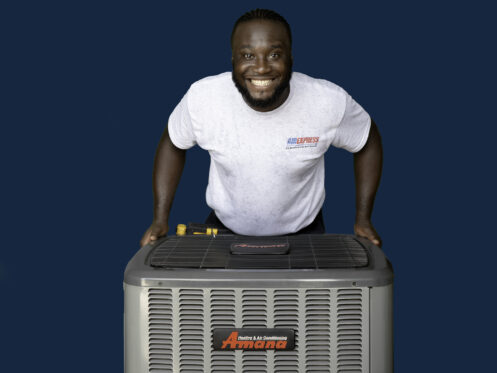If you’re looking to improve your home comfort and reduce your energy bills, upgrading to an HVAC system with a variable-speed fan or blower is a fantastic option. Standard HVAC systems that run on a traditional AC, heat pump or furnace are single-stage systems. In a single-stage system, both the cooling or heating unit and the blower run at 100% power all of the time. While single-stage systems aren’t necessarily bad, they do have some pretty significant drawbacks. This is especially true for central air conditioning systems in hot, humid climates where your home can get so uncomfortable that it sometimes feels like you’re stranded on a desert island. In this article, we’ll explain what these drawbacks are and as well as show you how a system with a variable-speed blower can help overcome them and keep your home more comfortable.
Drawbacks of a Single-Stage HVAC System
The biggest issue with a single-stage cooling system is that it will typically cycle on and off almost constantly in hot, humid conditions and usually only run for 10 to 15 minutes at a time. One problem with having such short cycles is that it makes it extremely difficult for the AC system to remove much moisture from the air and keep the indoor humidity level in check. Although air conditioning works by removing heat from the air inside and transferring it outside, it also removes moisture from the air. This is because moisture continually condenses on the evaporator coil due to the temperature difference between the cold refrigerant flowing through the coil and the hot air flowing over the coil.
Another issue with single-stage systems is that they often never run long enough to fully cool every part of the home to the same temperature. The central part of the home where the thermostat is located will always get cooled to the desired temperature during each cycle. However, you’ll often end up with some parts or rooms that never get as cool and potentially some parts that get too cold.
How an HVAC System With a Variable-Speed Blower Works
To overcome the issues we just discussed, HVAC manufacturers introduced two-stage and variable-speed systems that work alongside a variable-speed blower. In a two-stage system, the cooling or heating unit can run either at approximately 65% power or full power. If the system comes on when the home is near the desired temperature, the AC or heating unit will always run on the lower setting. The blower will also run slower so that it doesn’t circulate as much air. This results in the cooling or heating cycles lasting much longer.
Two-stage heating systems are a great choice for colder climates but aren’t really necessary in Florida where you rarely ever need to turn your heat on. However, a two-stage cooling system is perfect for our hot, humid climate since it will eliminate issues with hot or cold spots and be much more effective at controlling indoor humidity. This is because the blower will automatically continue to adjust the speed at which it runs to strike an ideal balance between heat load reduction and humidity reduction. That means the system will run slow enough that it draws much more moisture out of the air while still cooling sufficiently to keep the temperature from increasing. This results in a much more consistent and even temperature throughout the home and a drier, more comfortable environment.
On hotter days, a two-stage cooling system will often end up running most of the time so that the temperature always remains consistent and the humidity level never increases. Despite running so much, it will still use far less energy than a single-stage system would.
Variable-speed systems are even more efficient and even better at maintaining a consistently comfortable interior environment. This is because they can have up to 700 different settings and will constantly adjust the speed of both the cooling unit and the blower as needed to prevent the temperature and humidity level from ever fluctuating. While a two-stage system may shut off occasionally, a variable-speed system is designed to run continuously. The only time it will really ever shut off is if the outdoor and indoor temperatures are about the same and no cooling is needed. Most two-stage ACs and heat pumps can operate as low as 25% of their full capacity and will run at around 40% capacity the majority of the time. This leads to greatly decreased cooling costs, and it also can help to extend the lifespan of the system since there is always much wear on all of the components when operating at a much lower capacity.
Both two-stage and variable-speed systems operate in the same way and provide the same benefits. The only real difference between the two is that variable-speed systems are much more efficient and cost much less to run since they have many additional settings and can run at a much lower capacity.
At Ahoy! Cooling & Heating, we’ve been helping Tampa residents cruise their way to comfort since 2010. We’re the area’s top choice for HVAC installation and can help you upgrade to a two-stage or variable-speed system. We also offer exceptional repair and maintenance services so you can contact us for all of your home comfort needs.

